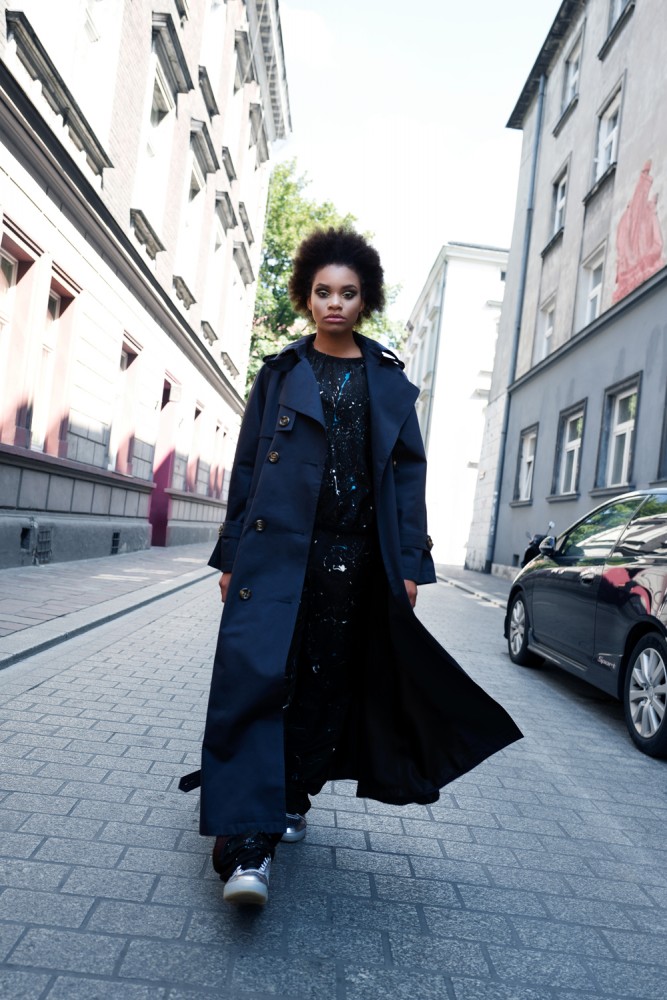
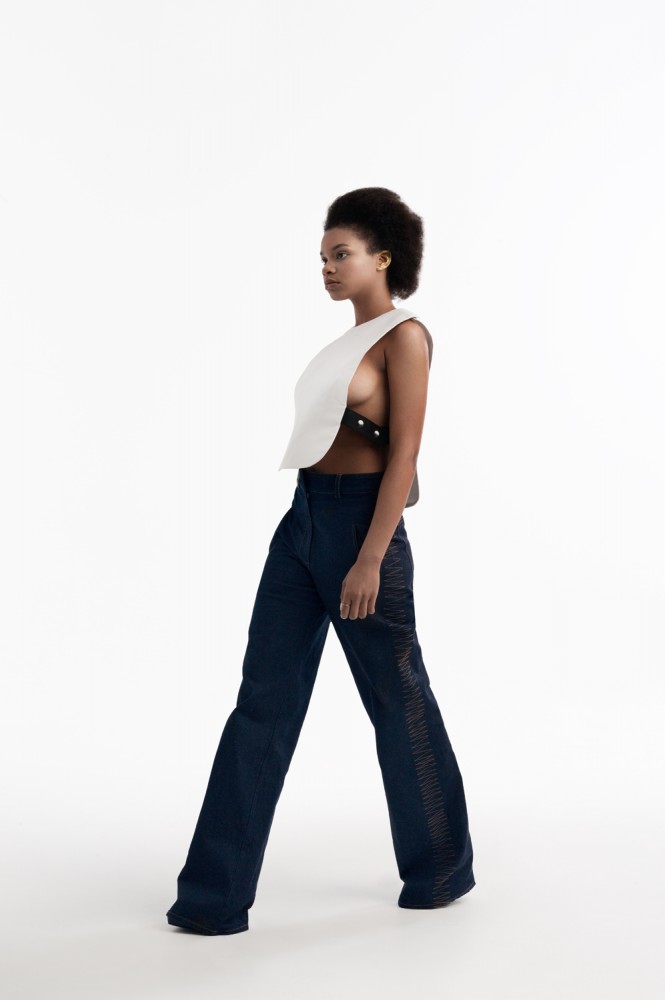
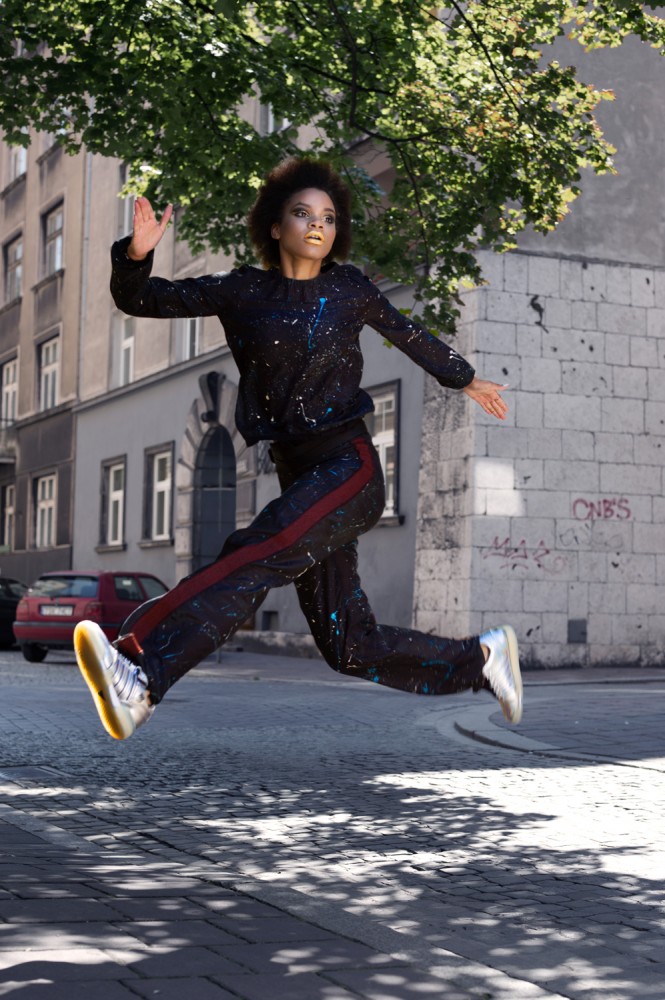
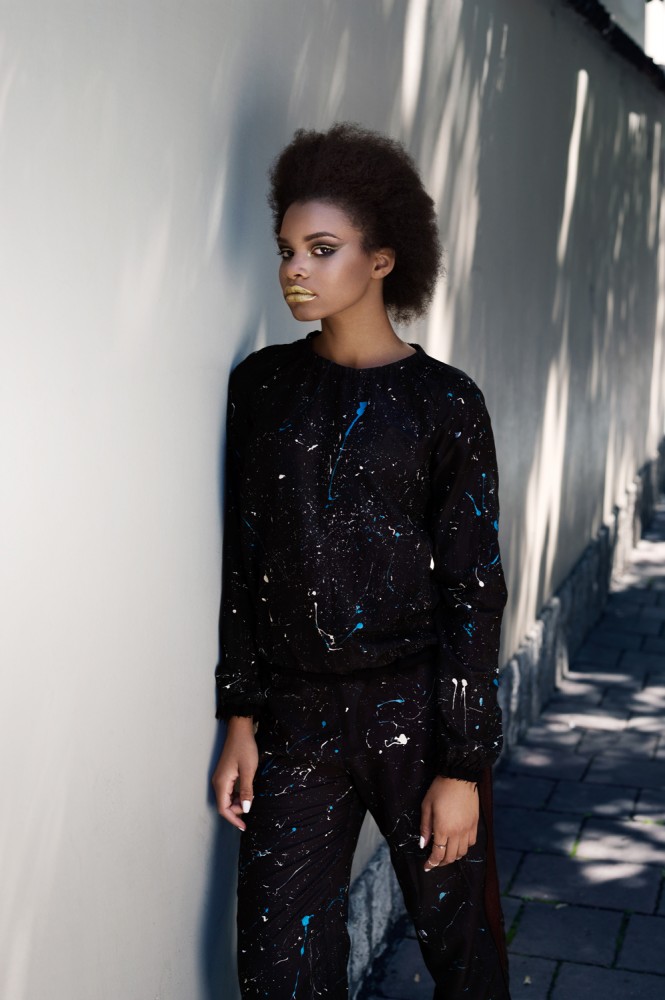
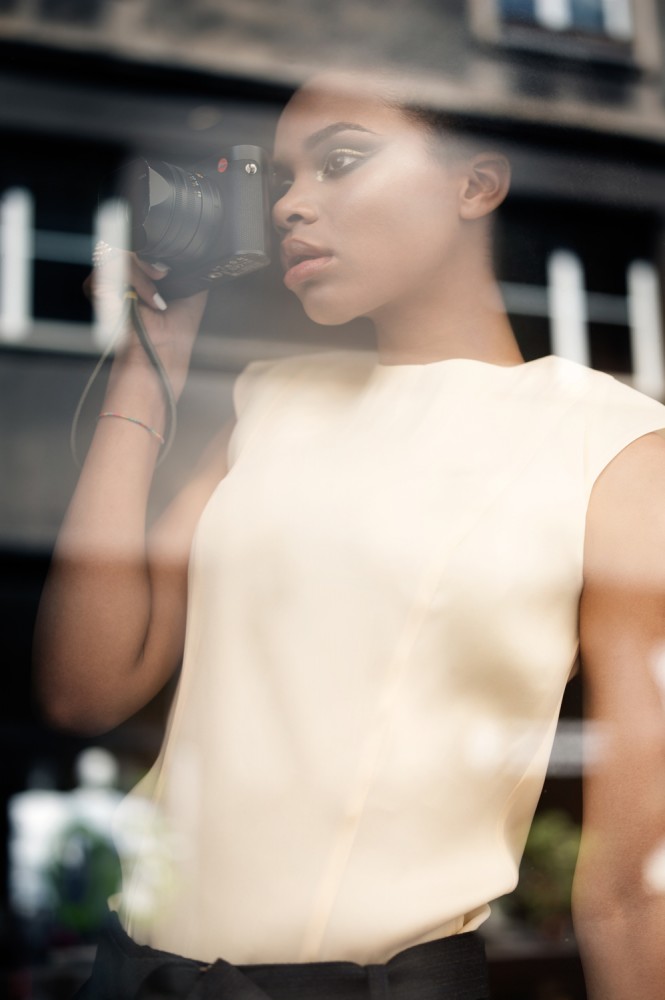
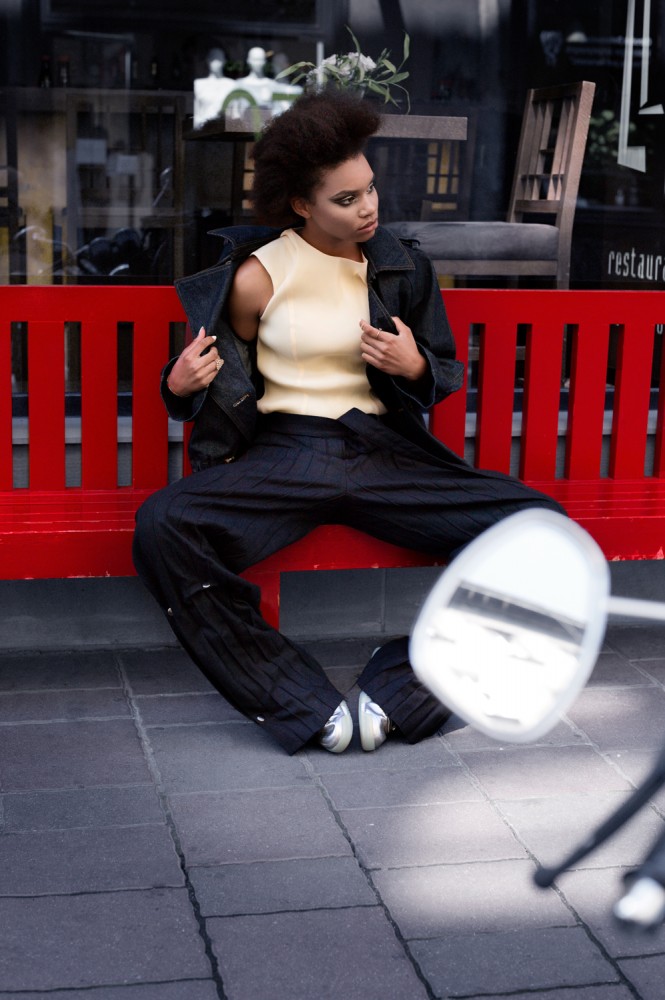
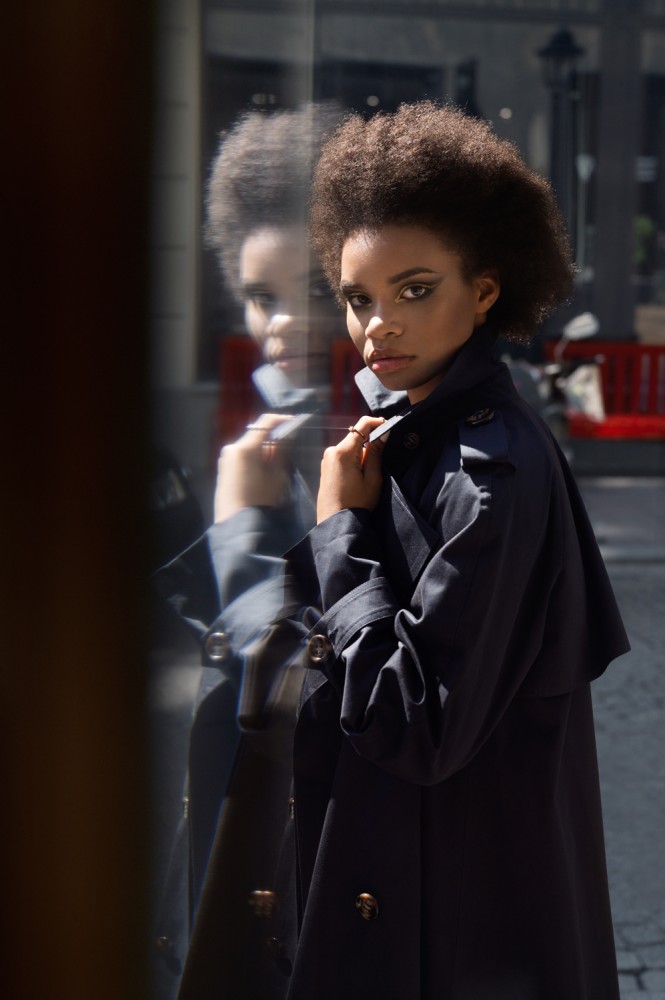
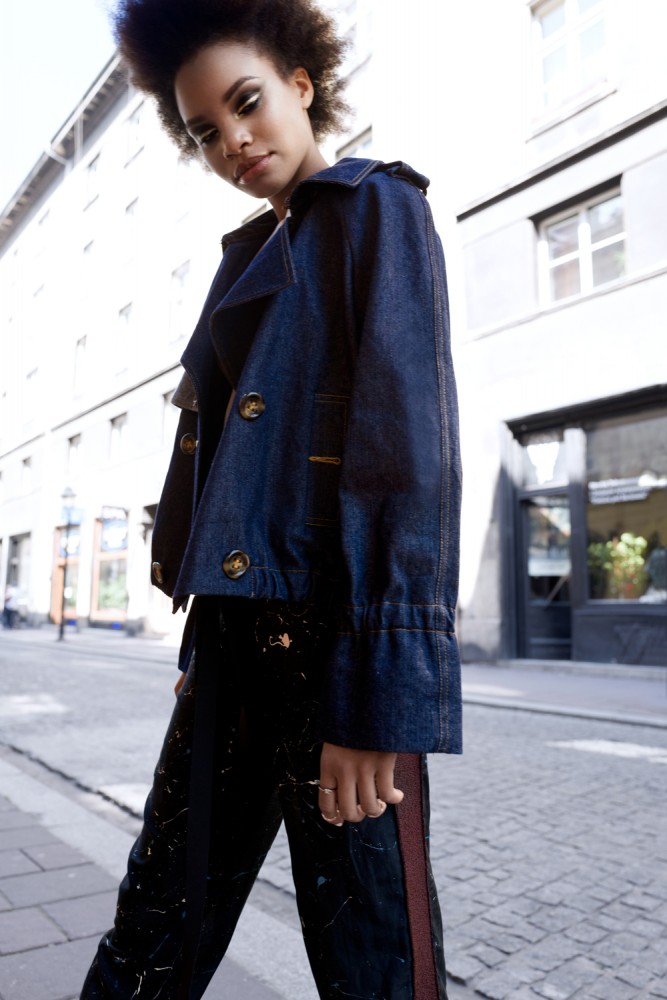
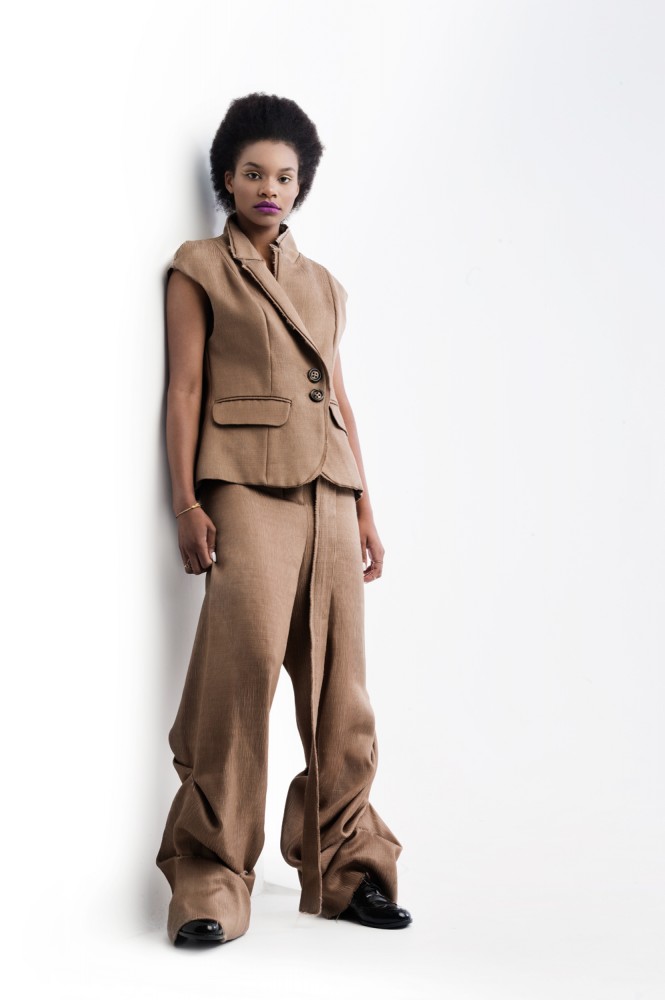
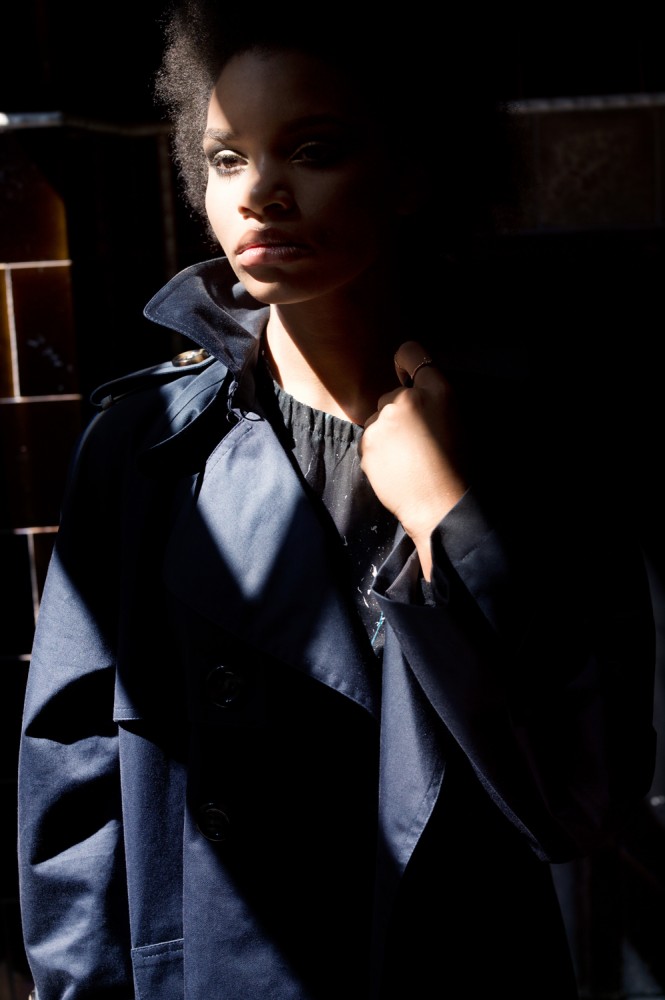












INTERVIEW
Michał Massa Mąsior

PHOTOGRAPHY Michał Massa Mąsior FASHION DESIGN & STYLING Anna Załucka-Kuczera with Fall/Winter Collection 2016/2017 HAIR & MAKEUP Monika Wróbel, Aleksandra Kołodziejczyk @ Womanhood Studio RETOUCHING Joanna Kordas MODEL Dorota Chojecka @ Unique Agency CAMERA Leica S (006) with Summarit-S 70 mm f/2.5 Asph and APO-Macro-Summarit-S 120 mm f/2.5., additional Leica Q.
Inspired by the opulent shapes and speckled patterns of the ‘Flashbacks’ collection by fashion designer Anna Załucka-Kuczera, Michał Massa Mąsior created a dynamic-urban series where he plays with everything from American portrait genre to wide-angle shots in a central perspective.
S Magazine: ‘Wide Angle’ is mostly made up of dynamic pictures taken on the streets with some individual ones taken in the studio. Why this mix?
Michał Massa Mąsior: As long as the material is cohesive and fits together, I’ve found that varying scenery is not a bad approach. For ‘Wide Angle’ I wanted to combine the traditional studio shots (well, there are really just two) which tend to be posed and more static, with the unpredictability and dynamism of street shots. Anna Załucka-Kuczera’s collection also lends itself very well to both the lookbook photos and the dynamic street shots. In that sense, the mixed method was also in response to the collection itself.
Do you work with a concept and how firmly do you keep to it?
I always start with the idea. Before I start a photo shoot I plan and think ahead as much as possible, prepare mood boards, etc. What I’ve found is that this really helps me convey the idea and vision in my head to the models. Hilarity ensues sometimes as I mock pose for the photos myself. Having said that, I’m not religious about executing my initial plan. Ironically, the more I prepare the more scope I have to go off course and be flexible, because inspiration often comes during the actual photo shoot.
The styling is cool, relaxed and sometimes has a street-look. What criteria do you base your choice of stylists on, and do you yourself influence the styling?
For ‘Wide Angle’, the stylist was the designer herself. She’s a highly talented artist and I often felt it was better for me not to interfere. After all, she designed the collection and her creative input was on point. I helped her realise the stylistic vision through my choice of locations, their aesthetic feel and grain, selecting the right model and injecting the right amount of dynamism into the shots. In general I tend not to dictate anything to stylists, although we obviously discuss their choices in the planning stages. Once we agree on the framework, I prefer to let them get on with their work.
What characteristics do your models need to have?
I'm always on the lookout. It's impossible to define the “right” set of characteristics as our concepts of beauty evolve and fashion changes. I think it’s safe to say that geography often dictates the choice of model. Unless, that is, you’re based in New York or Paris where major modelling companies reside and it’s easier to satisfy even very specific requirements. Day to day, I mostly look for high body awareness - that always enriches the end result and makes working with a model go faster.
In addition to your fashion pictures, you are active as a street and a documentary photographer. These are two rather diverse genres. Why do you do both of them?
I want to keep growing, developing. Photography is my biggest passion and I always carry a camera with me. In some ways, I see the world through the lens of a camera. Street and documentary photography allow me to look at fashion photography from another angle, help me develop new approaches and bring new aspects of photography into fashion.
You also write about photography. Photographers are by nature visual. What role do words play for you? Does your photography have a theoretical foundation. What direction do you follow?
Writing was entirely incidental. I started off mainly with the view to help promote my photography school; but I quickly realised that writing about photography gives me another layer of reflection and understanding of the technical aspects of my work. I now write a monthly column for Lounge magazine and also contribute to fotoblogia.pl (for now only in Polish). I’m always happy to discuss the points I write about and I’m quite relaxed about it. I think the written word is important for theoretical discussions about photography. We can certainly talk about photos, technical ideas, approach and artistic values, of course. But I strongly believe that photography should always be able to stand on its own, without the need for lengthy explanations about what the artist wanted to convey. That should be evident from the photos themselves.
Do you also work analogue or only digital? How much space to you yourself give to post-production?
I still have the analogue cameras with which I started off my current career. I have to say, though, that I barely use them. Occasionally, I will use a Polaroid camera. I am drawn towards analogue photography, especially when I look at, and handle, celluloid film. But I developed the lion's share of my professional skills using digital cameras, so analogue photography is definitely more of a hobby. Digital post-production is simply too important and too useful. Development of RAW files, finding the best hue and saturation can dramatically improve a photograph. Every aspect of photography traditionally done in a dark room can now be done digitally. I still aim to accomplish as much as possible when actually taking the photograph, and limit post-production to a minimum. Still, digital sensor pixels are arranged very precisely, which makes imperfections much more noticeable so some post-production is a necessity. As I said, I try to keep it to an absolute minimum.
How is life for a photographer in Poland? Do you also work abroad?
Poland is a very rapidly developing country. Quite a bit goes on in Krakow, it’s a very dynamic place. There is no shortage of demand for photography. Because Krakow is generally a very picturesque place, I often do work for foreign customers. Recently, I delivered work for advertising companies based in India. I’ve had customers in Germany, and I’ve also worked in both Germany and the Great Britain. I always enjoy travelling abroad for work and I hope to do it as much as possible.